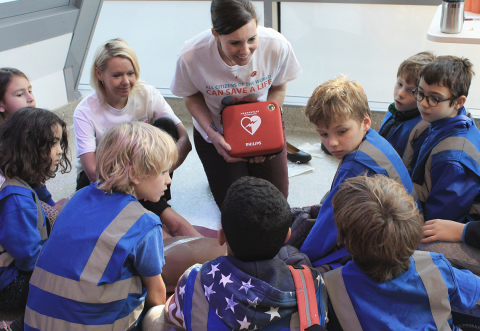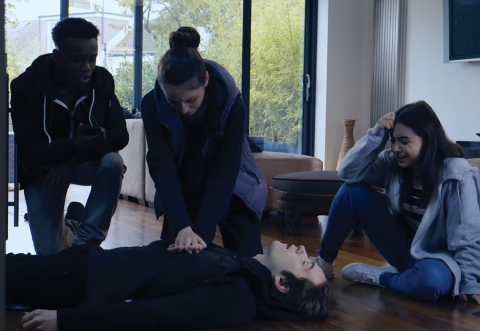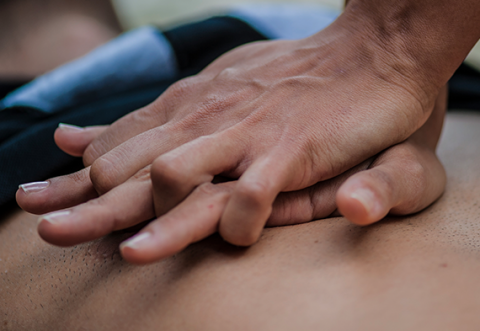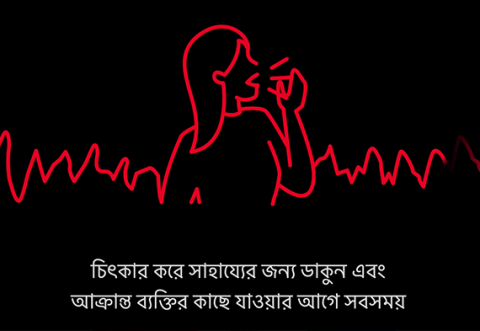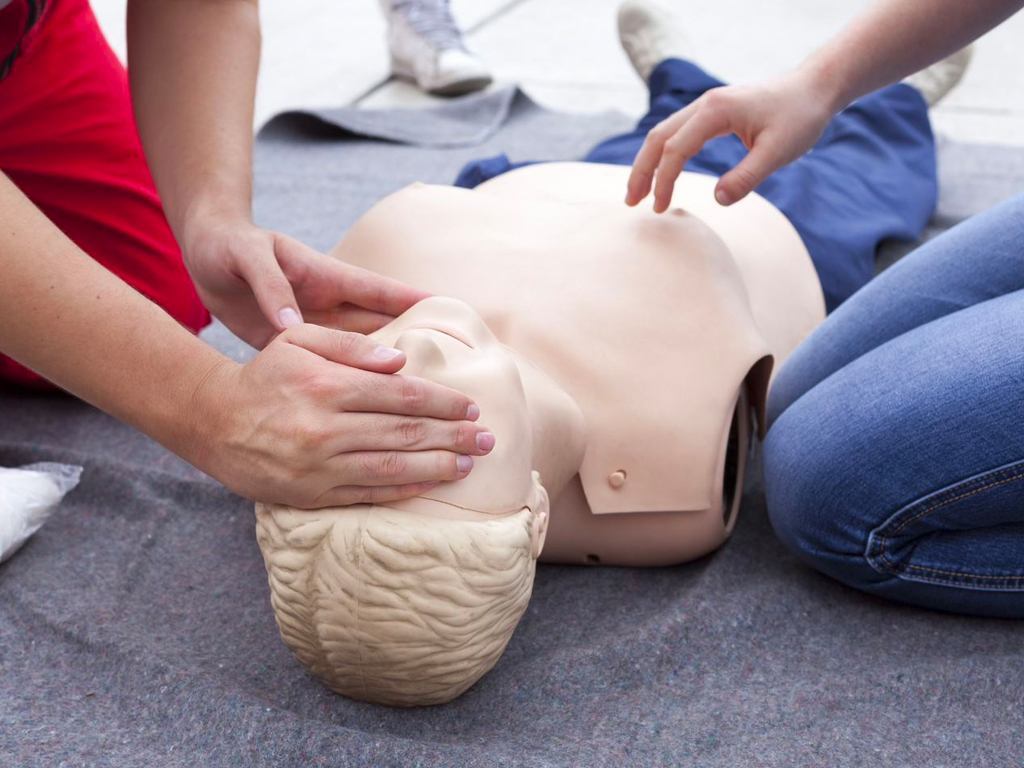
If you see someone has collapsed, their heart may have suddenly stopped beating, and their breathing may be abnormal or has stopped. You need to act fast so they can have the best chance of survival. Without quick action, the person will die.
How to do CPR
To learn how to perform CPR, watch our short animation video below. We also have versions of this animation in a range of language translations.
A step-by-step guide to doing CPR
By developing the skills and confidence to follow these simple steps, you could be a lifesaver in an emergency.
Before you approach the person who has collapsed, check your surroundings for danger.
1. Shout for help
- Shout for help and gently shake the person who has collapsed.
2. Look and listen for signs of normal breathing
- Look for the rise and fall of their chest.
3. Call 999
- Put the phone on loudspeaker and tell them you are with someone who is not breathing.
4. Start chest compressions
- Interlock your fingers
- Place your hands in the centre of the chest
- Push down hard and then release twice per second, and don’t stop
The ambulance call handler will help you.
5. The ambulance call handler will tell you where the nearest automated external defibrillator (AED) is. If someone is with you, ask them to fetch it and bring it back.
- Do not leave the person if you are on your own.
6. If you have a defibrillator, switch it on and follow the instructions
- The defibrillator will tell you exactly what to do. Visit our defibrillator page for more information about defibrillators.
7. Continue CPR
Continue giving CPR until:
- the AED asks you to pause while it reanalyses and gives another shock if needed
- a paramedic arrives and tells you what to do
- the person shows signs of life.
What’s the difference between a heart attack and cardiac arrest?
These terms are generally used interchangeably, but they are two different events.
A heart attack occurs when an artery supplying the heart with blood becomes blocked. This usually causes chest pain and leads to damage to some of the muscle of the heart. Some people may also experience neck and jaw pain, and arm pain – for some, this may also feel like indigestion.
A heart attack may cause cardiac arrest, particularly in the early stages, but this is not inevitable. The risk of cardiac arrest, however, emphasises the importance of calling for immediate help if anyone is suspected of having a heart attack so that they can receive treatment to reduce the damage to their heart and reduce the risk of a cardiac arrest occurring.
A cardiac arrest happens when someone’s heart suddenly stops beating, and their breathing is abnormal or has stopped. It is an electrical problem caused by irregular heart rhythms called arrhythmias. Death occurs within minutes after the heart stops.
